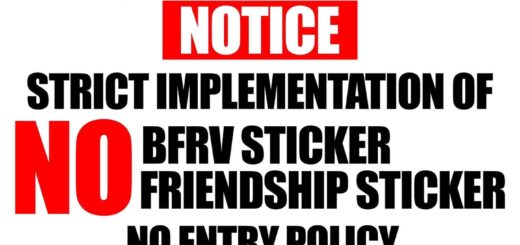Newspapers are also going digital
From Adage.com
NEW YORK (AdAge.com) — A few months ago, a longtime print publisher exploring new employment in digital media met with Greg Coleman, the president and chief revenue officer of the Huffington Post.
“He showed up to lunch in a suit,” recalled Mr. Coleman. “I said, ‘What are you doing with that suit?’ This is somebody I really like. It’s really simply a symbol of the past. It’s a symbol of being in his big office running a magazine and failing to acknowledge that pages are way down.”
It was a small moment about a superficial element, but it was also part of a bigger tableau in which print veterans who want digital jobs are struggling more than before.
Prior years, of course, saw countless print-media pros make the jump into digital jobs: Google’s Eileen Naughton and Penry Price, AOL’s Tim Armstrong, Microsoft’s Robin Domeniconi, Huffington Post’s Mr. Coleman, The Daily Beast’s Stephen Colvin, Warner Bros. Digital Media’s Katherine Rizzuto and many other digital bigs are converted print veterans.
Those jumps paralleled changing industry dynamics. Between January 2005 and January 2010, newspapers eliminated 109,500 jobs and magazines shed 19,400, according to an Ad Age DataCenter analysis of Bureau of Labor Statistics jobs data. During that same period, jobs at internet media companies, portals and search engines grew by 18,300.
Whether motivated by personal choice or downsizing at their employers, the switch to digital offered many print veterans footholds in a growing young sector and the chance to learn new skills.
But it is becoming increasingly difficult for even seasoned professionals to segue from print to digital.
Print believers
“It is tougher and a more narrow path,” said J.D. Rehm, managing partner at Mercury Group, a media and marketing recruiting firm. “There are now enough people who have digital experience that digital clients can hire them. They don’t have to worry about hiring from a tangential side of the business, i.e., print. But I think the other part of this, which is equally important, is that some digital clients wonder, if a print person hasn’t touched digital yet, what is that saying about them?”
In the early days, digital actually saw a lot of advantages in hiring print veterans, said Penry Price, VP-global agency development at Google and formerly an ad sales executive at magazines including Us Weekly and Rolling Stone. He, like the other executives interviewed, is also still a big believer in print.
“Back then you were basically looking for the best talent you could find that could discuss a marketing opportunity or solution with a given agency or client,” Mr. Price said. “You tried to draft the best athletes to your team. A lot of those people were brought up on selling print. On the consumer magazine side, they were always good at crafting the story of an audience and connecting it to a marketer’s brand.”
Penry Price, Google
Google
Penry Price, Google
Now digital media has become so intricate — with so much of ad sales revolving around technology and ongoing campaign optimization — and the talent pool has so deepened that print devotees are no longer go-to candidates. In fact, it’s closer to the opposite.
“When we look nowadays for talent, we don’t look for that person,” Mr. Price said. “We look for someone who’s not a print seller. We look for someone who’s a lot more analytical. We’ve found a few in print, but it’s gotten more complex.”
‘Prejudice’
The path has become tough enough to create some strained job interviews, agreed Mr. Coleman, president-chief revenue officer at the Huffington Post and, once upon a time, a top executive at Reader’s Digest Association. “What some people today are still trying to do is to kind of fake it, say, ‘I did both at my magazine,'” he said. “I’m like, be honest, what’s the revenue percentage from digital vs. print? Under 10% from digital? At that point I say to them, as more career counseling, if it’s to that level and your vision is still selling pages, it really doesn’t count. You can’t trade on the 5% or 10% experience as something to qualify you to come take a senior sales role at a company like a Yahoo or a Huffington Post.”
That’s not to say the situation is always fair.
There’s definitely a “prejudice” against print people, said Mark Oltarsh, chief revenue officer at website portfolio BetaWave, and a former executive at magazine publishers including Condé Nast and Bauer.
“I hired people from print, first thing I did when I came to this job,” Mr. Oltarsh said. He and one of the print hires shortly closed one of the biggest deals the company had ever completed, he said. Another hire with no digital experience whatsoever was, within three months, generating more requests for proposals from advertisers and getting more meetings than all four people already in place on the West Coast, he said.
But digital employers know that not every print convert will thrive that way. “It is not impossible, but it is definitely a major re-learning curve on a lot of different things,” said Jim Spanfeller, the former Forbes.com chief who’s now president-CEO of The Spanfeller Group.
Mr. Spanfeller himself mastered the digital business at Forbes.com after leaving a print post as president of the Ziff Davis Consumer Magazine Group. “I went home with a headache for the first six months because everything was so new,” he said. “Most people make the transition, but there is a percentage of folks who don’t.”
Robin Domeniconi, Microsoftt
Robin Domeniconi, Microsoftt
Partly for that reason, digital employers who do take a chance on print pros aren’t necessarily going to hand out positions equivalent to those being left behind. “There are folks out there who will probably take a chance on you, but they probably won’t give you the same level of responsibility you had in the offline world, which translates into less pay,” Mr. Spanfeller said.
The good news now for print professionals who want to make the switch is that their digital competition sometimes lacks certain skills that have become more important in the recession. Many digital natives who came up haven’t experienced the ups and downs of business that have marked other, more mature media sectors.
If online advertising increasingly focuses on particular audiences, moreover, over and above certain sites, print professionals may have an advantage, Mr. Price added. “If this trend of audience-based buying really comes, it could become another wave of really great print marketers who understand audiences and could craft a story,” he said.
How to make the jump today
So, as a print veteran looking to jump to digital despite the higher bar, what are your options?
1. GET SOME DIGITAL TRAINING, said J.D. Rehm, managing partner at Mercury Group, the media and marketing recruiting firm. “If your company is not providing you with good training, you should seek outside help.” The Laredo Group is one company to check out. Or find another route. “I knew a print guy who wasn’t getting exposed to digital,” Mr. Rehm said. “He offered his services gratis to a startup he’d met through somebody. They were still looking to pick experienced people’s brains even if they didn’t have digital know-how. He volunteered his time, and in doing so, he soaked up as much as he could from them.”
2. ATTEND NETWORKING AND EDUCATIONAL EVENTS by groups including 212, an interactive advertising club in New York and found online at 212NYC.org, or The Interactive Advertising Bureau.
3. RECONSIDER YOUR INDUSTRY-CAPTAIN INTERVIEW SUIT. “I have a publisher I met with a few months ago who’d had his job for many years,” said Mr. Coleman, president-chief revenue officer at the Huffington Post. “He showed up to lunch in a suit. I said, ‘What are you doing with that suit?’ This is somebody I really like. It’s really simply a symbol of the past. It’s a symbol of being in his big office running a magazine and failing to acknowledge that pages are way down.”
4. BE READY TO EXPLAIN WHY YOU’RE INTERESTED IN MAKING THE SWITCH NOW. “When I’m interviewing people, one of the first questions I ask is, ‘Why now?'” said Penry Price, VP-global agency development at Google. “There has to be a really good answer for me. A lot of us in the industry listen to somebody who missed wave one, missed wave two, and want to know what took you so long to see the challenges the print industry was facing.”
5. MARSHAL YOUR FAITH IN YOURSELF AND CONSIDER ACCEPTING A PAY CUT. “You’ve got to have enough confidence in yourself that once you catch up to the basics, you’ll do great,” said Jim Spanfeller, president-CEO of The Spanfeller Group.





Recent Comments